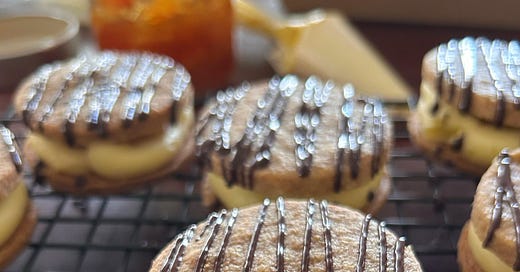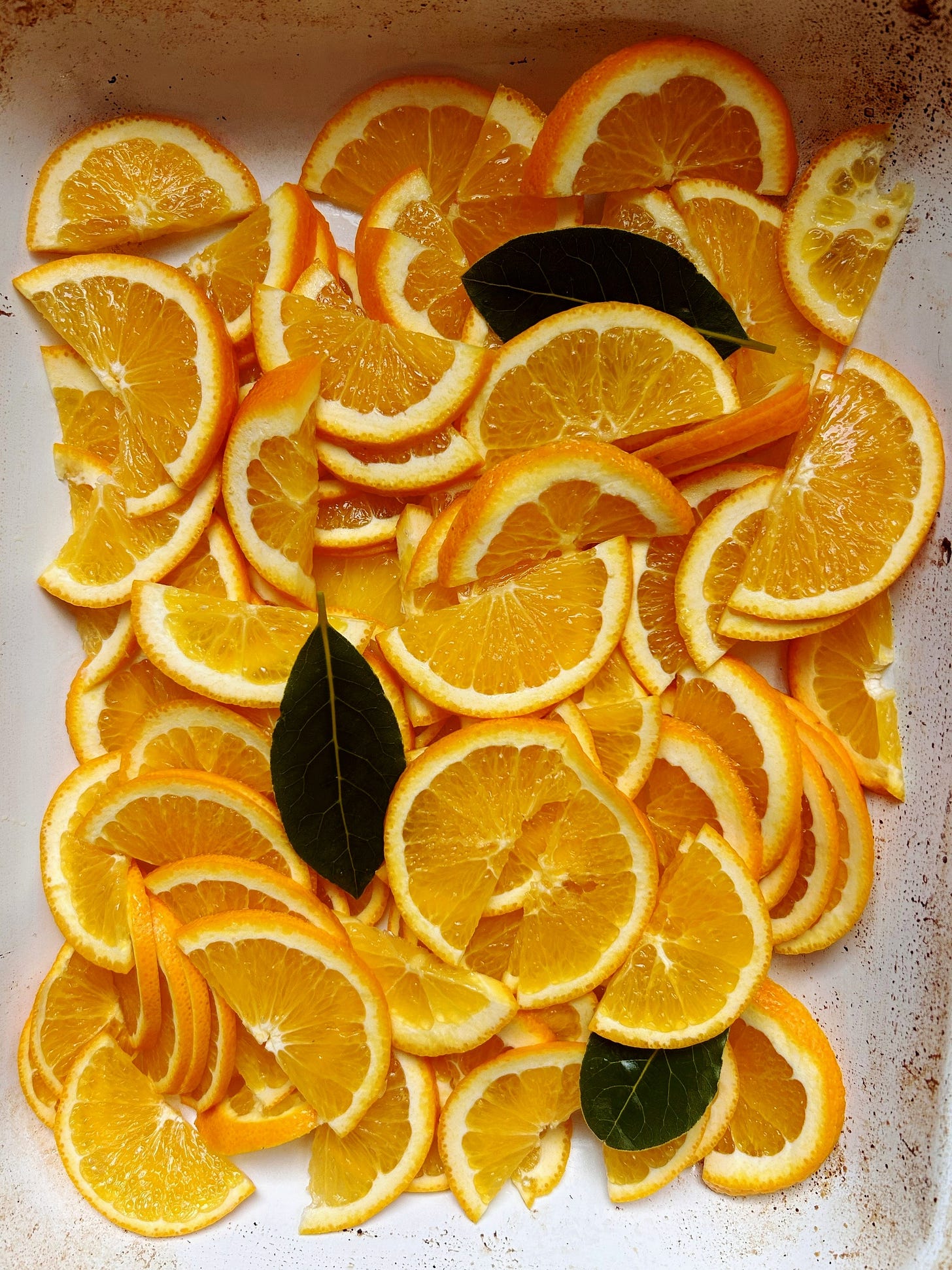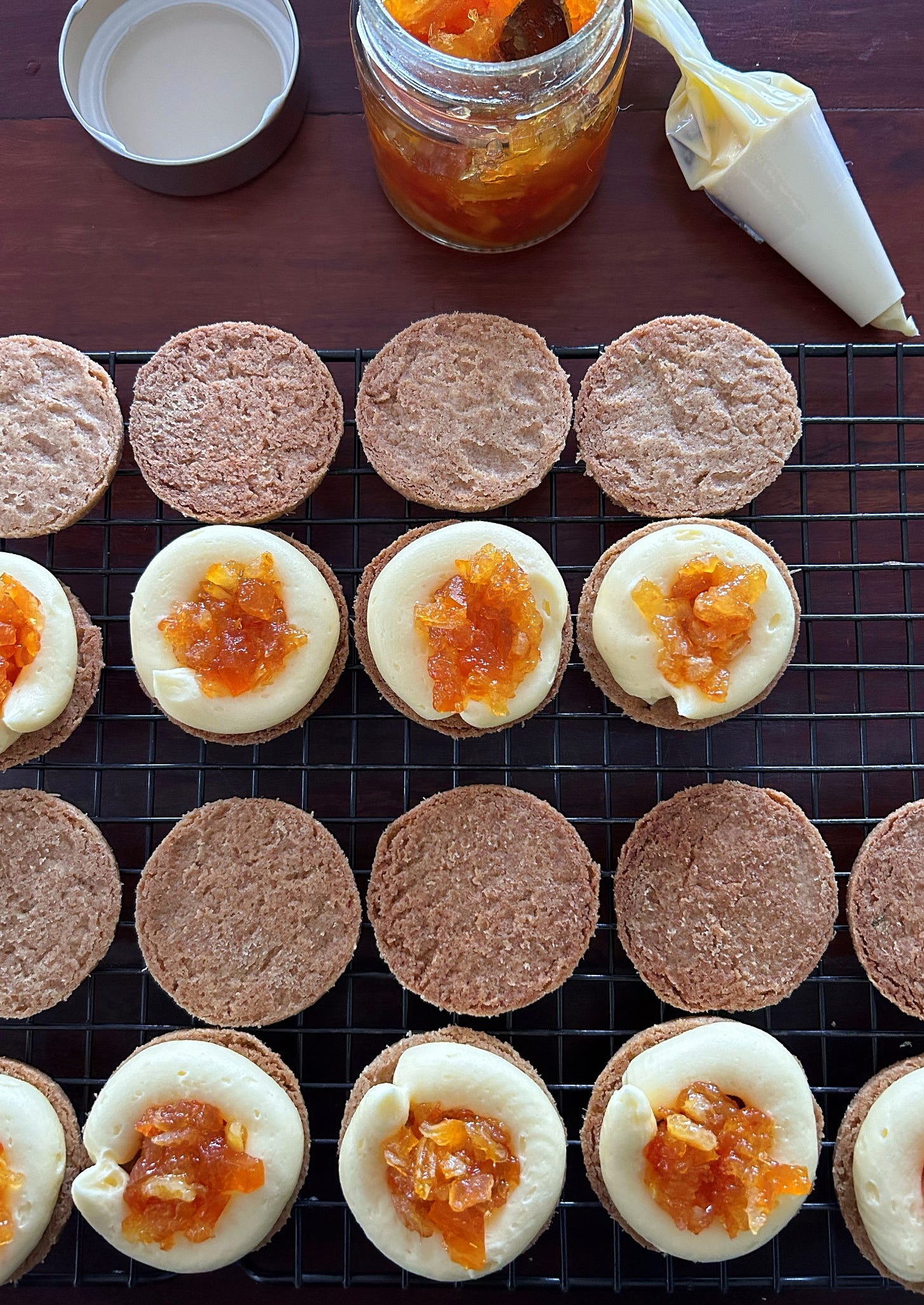I am a lifelong lover of marmalade. It began in childhood when there were rarely any concessions to a child's palette. It was just assumed that you would eat marmalade. Granted, I’m not sure that I was eating thick-cut whiskey marmalade, but it was more than likely homemade by my grandma or mother. It might occasionally have been Roses lime marmalade, our family’s concession to purchased marmalade. It is what I consider an entry-level marmalade suited to children and those yet to be convinced of the merits of marmalade. With its pale yellowy-green jelly and only a scant number of wafer-thin sheds of peel, it is more about flavour than texture. Something of a marmalade anathema - a truly good marmalade is all about the taste and the uncompromising heft of the peel.
I consider making marmalade as one of life’s great pleasures. It is a kitchen task that requires time and patience, but one that allows you to revel in the process rather than galloping towards the finish. The painstaking job of shredding the peel into fine slices that is repetitious enough to let the mind wander, but not too far; after all, a sharp knife is a requirement. The fragrance, initially of the fresh fruit, is lively and bright, and then as it cooks, it mellows into a deep, warm citrussy haze. The colour is similarly transformed from sunshiny to caramel. Marmalade making is, as D H Lawrence recognised, a simple yet productive task that allows the mind some respite.
I got the blues thinking of the future, so I left off and made marmalade. It’s amazing how it cheers one up to shred orange and scrub the floor.
D H Lawrence
There are numerous ways of making marmalade. The fruit can be boiled whole before chopping it (the quickest way). Sometimes, the whole fruit is sliced, leaving the flesh and peel attached. Other times, just the peel is thinly removed from the fruit and finely shredded, or the peel and the pith can be sliced into more substantial threads. You could, if you really must throw the boiled fruit into a food processor, blending it into smoothness. To my mind, without the telltale slices of peel, this is more citrus fruit spread or jam than marmalade. Some marmalades use the pulp, others just the juice. Often, the peel is left to soak overnight, slightly softening the tough skins, before boiling them the following day. They must be soft before the sugar is added; otherwise, chewing the peel will be a little like how I imagine chewing a piece of leather would be.
Some like their marmalade to be soft and syrupy, others prefer a firm, almost cuttable texture. Honestly, I’m happy with both. Making marmalade at home is an inexact science yielding variable results. While I don’t like my marmalade at the outer edges of the spectrum, neither very runny nor overly solid, everything in between is good.
When I used to judge the preserves at the Royal Show in Brisbane, it was, more often than not, a marmalade that won the best in the show. They could be the very best or the very worst, running the extremes from tough citrus pieces in an overly caramelised syrup to delightfully sublime concoctions with perfectly sliced peels suspended in ‘just right’ jellies with a flavour that straddling the edge of almost too tart. Such marmalade perfection is a true skill.
Perhaps, if you are not yet a convert to the appeal of marmalade, using it in ways other than spreading it on toast might just tip you into the marmalade consumer column. Mixed with a little oil, garlic and some spices, it makes a delicious, sticky glaze for meat. The addition of marmalade to a bread and butter pudding, along with a glug of whiskey, elevates this pudding to something special. Serve a simple dessert of apples baked with marmalade topped with ice cream. Or a marmalade version of a Bakewell tart. Roast pumpkin and carrots with marmalade. And it’s a lovely addition to a cake.
These whiskey marmalade sandwich biscuits feature the classic flavour pairing of marmalade and whiskey. On this occasion, the whisky is in the buttercream, and I use a tart marmalade in the centre to offset the sweetness. The simple wholemeal shortbread biscuit is an ideal foil for the richness of the filling, and while the chocolate drizzle isn’t necessary, it somehow finishes it off.
Marmalade Whiskey Sandwich Biscuit
Makes 10
150 g wholemeal spelt flour
50 g caster sugar
100 g cold, salted butter cut into cubes
100 g marmalade (if the pieces are large, you may need to chop them a little)
30 g dark chocolate (optional)
For the buttercream:
125 g softened salted butter
200 g icing sugar
20 ml whiskey
Preheat the oven to 170°C. Line two baking sheets with baking paper.
Add the flour and sugar to the bowl of a food processor. Pulse a couple of times to combine. Add the butter and mix until the dough comes together.
Tip the dough onto a lightly floured surface and roll it out until it is about 3 mm thick. Cut into rounds using a 5.5 cm biscuit cutter. Place the biscuits onto the prepared trays. Reroll the scraps and cut again. Bake for about 12 minutes or until the biscuits are very lightly browned. Cool on the tray for a few minutes before transferring to a wire rack to cool completely.
To avoid having to clean another piece of equipment, I make the buttercream in the food processor. Add the softened butter, icing sugar and whiskey to the bowl of the food processor and whizz until it is light and fluffy.
To assemble, pipe a ring of buttercream on the base of 10 biscuits. Fill the centre with a teaspoon of marmalade and place a second biscuit on top. Melt the chocolate in the microwave or in a bowl set over a saucepan of water. Pour the melted chocolate into a small ziplock plastic bag and snip off the tiniest corner before drizzling the chocolate over the top of each biscuit.
These will keep in an airtight container for a few days but the biscuit will soften over time.
Next week: festival food + winter root vegetable cake
Each week, I share the latest instalment of the book I am writing here on Substack, Home Baked: a Year of Seasonal Baking. A subscription will ensure you don’t miss any of the stories and recipes. I’m very grateful for the support of my paid subscribers. A paid subscription will give you access to previous recipes, as well as printer-friendly recipe cards and bonus material. There is also an additional newsletter on Friday, which is a mixed bag and touches on all manner of food topics. I’d love for you to be a part of it.
For paid subscribers, click on the button for the printer-friendly recipe card as well as a recipe I grew up with and love to this day - our family recipe for marmalade loaf.









I love marmalade too and it's part of my Imbolc/Brigid's Day celebration, heavily spread on turmeric scones with homemade butter. A very wise bear once said... "A wise bear always keeps a marmalade sandwich in his hat in case of emergency" (Paddington Bear).
So timely, Julia! Someone gifted me about a kilo of kumquats a month or so ago. I didn’t have time to do anything with them, so I froze them thinking I might make a marmalade later. Now I’m inspired and dreaming of all the things I can make from the marmalade—assuming it comes out. We’ll see. Not sure if it’ll work with frozen fruit. I’m intrigued by the D.H. Lawrence quote too and would love to know the source. Thanks for a very interesting post.